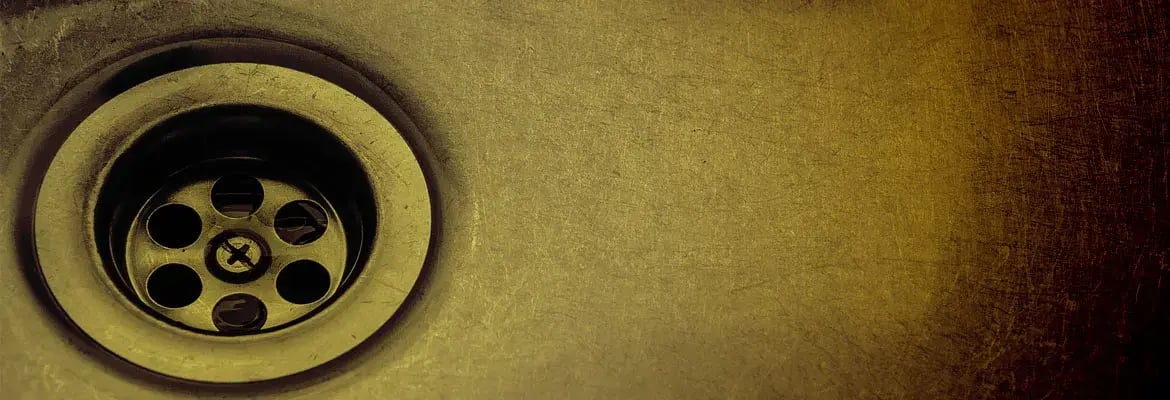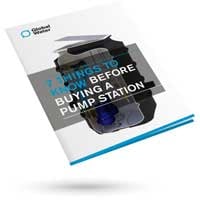Grease Traps: Size, Calculations and Cleaning Maintenance
In commercial kitchens, grease traps are key to filtering fats, oils, and grease (FOG) from wastewater. Correct sizing, and maintenance of Grease Traps ensures longevity and smooth commercial kitchen operations.

Determining and Calculating Grease Trap Size/Treatment Flow Rate
The effectiveness of a grease trap hinges on its size, tailored to accommodate fixture flow rates. Begin by calculating total wastewater in-flow from sinks, dishwashers, and FOG-emitting equipment. Adhering to your local regulations, choose a grease trap with a greater capacity than the calculated flow rate to mitigate overflow risks and ensure resilience. Larger establishments may need multiple or higher-capacity traps, also known as grease arrestors. Your local water authority will likely have guidelines or a pre-treatment application checklist to help you understand what their specific requirements may be.
Maintaining Grease Traps
Ensuring proper maintenance is crucial for keeping your grease trap operating efficiently. Start by conducting regular inspections to check for any structural issues and ensure it's working effectively. Make sure to remove any solidified grease and debris to prevent buildup. This is often done using a vacuum truck. The truck can target the layer of fat on top of your grease trap’s liquid level as well as any heavier solids that sit at the bottom. Note that the truck does not need to suck the Grease Arrestor dry. Clean the trap's interior using hot water and environmentally friendly degreasers. It's also important to educate kitchen staff on the correct methods of waste disposal to avoid issues with compliance or environmental contamination. Lastly, keep detailed records of all maintenance activities to maintain accountability and comply with regulations.
Saving Space with Grease Munchers
Grease munchers represent a space saving solution in grease traps. These devices are designed to tackle the commercial challenges posed by trade waste treatment in retro fitted premises and shorter-term environments such as rented premises. By leveraging advanced microbiological activity, grease munchers effectively break down grease deposits, mitigating the risk of clogs and bolstering the overall performance of grease traps. Their innovative design allows for a smaller footprint in tight premises, enhancing the efficiency of grease trap systems with a treatment flow rate of up to 1000L/hr.
Efficient Discharge with DrainAce Compact Undersink Pump Stations:
Undersink Pump Stations, such as the DrainAce Compact, play a crucial role in streamlining the management of greasy waste in commercial kitchen wastewater. Specifically designed for the discharge of sink waste and greywater when gravity pipework systems are not possible, these units offer tailored solutions to address the challenges of getting trade waste into above Ground Grease Arrestors. With a focus on efficiency and reliability, these pump stations ensure the smooth and efficient inflow to, or outflow from grease trap systems.
Establishing Grease Trap Cleaning Schedules
The frequency of grease trap cleaning depends on trap size, FOG generation volume from your site, and regional regulations. Develop a systematic cleaning schedule for your site that takes these factors into account to prevent grease buildup. Consistency and thoroughness in cleaning are key to preventing potential malfunctions.
Understanding Grease Trap Overflow
When a grease trap overflows, it indicates either a lack of proper maintenance often resulting in blockage, or improper sizing with the device unable to effectively treat inflows. Neglecting regular maintenance leads to the accumulation of fats, oils, and grease (FOG), which can impair the trap's effectiveness. Additionally, choosing a grease trap that is too small for your needs increases the likelihood of overflow incidents, or that discharge flow has NOT been sufficiently treated to regulatory standards. To address this issue, it's important to adhere to a proactive maintenance schedule and ensure that your grease trap is appropriately sized to prevent these issues.
By embracing the principles of industry best practice, operators ensure efficient operations of sites, compliance with regulatory standards, and promote environmental sustainability through responsible management of grease traps.
For more information, get in touch with the Global Water Sales team for assistance.
Tags: DrainAce, Grease Arrestor, Water treatment




